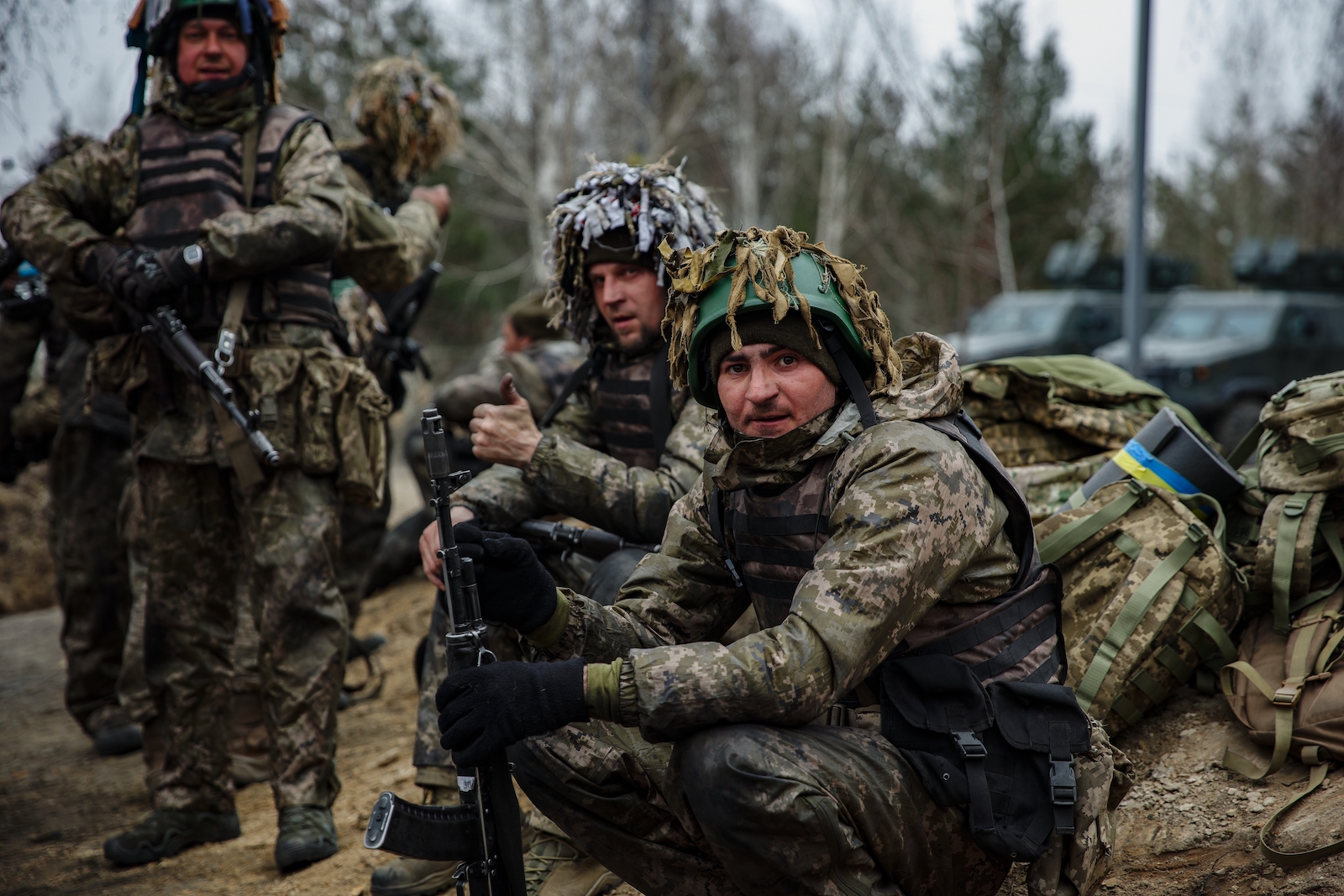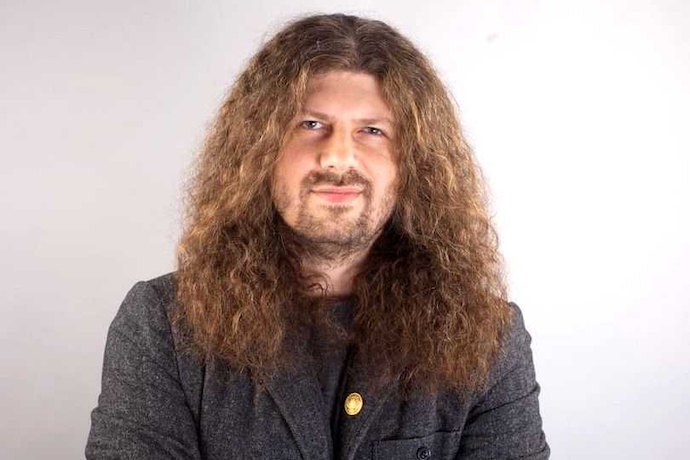
‘Appeasement Will Fail’: A War Correspondent’s Warning from Ukraine
Remus Cernea is a co-founder of Romania’s humanist movement and a former Member of Parliament, whose career has long sat at the intersection of politics, ethics, and civil liberties. A former president of the Green Party in Romania, he has been a vocal advocate for church–state separation and anti-discrimination, and founded the Solidarity for Freedom of Conscience, a civic platform dedicated to protecting freedom of belief. In 2009, he ran for the presidency of Romania, bringing these causes into the national political arena.
Since 2022, Cernea has reported from Ukraine as a war correspondent, writing for Newsweek Romania and contributing analysis to international outlets. He also provides frontline war footage and live transmissions for five Romanian television channels. Beyond conflict reporting, his advocacy spans human rights, environmental protection, and animal welfare, including legislative efforts to ban the use of wild animals in circuses. Based in Bucharest, Cernea alternates between frontline reporting and sustained work on public advocacy and media freedom initiatives.
In this interview, Cernea argues that peace with Russia can be achieved only through strength, not concessions. He calls for full military support for Ukraine, especially the delivery of Patriot air defense systems, contending that deterrence, not diplomacy, is the only force capable of halting Kremlin aggression. Drawing on recent reporting trips, he describes an escalation of missile and drone strikes on cities, infrastructure, and agricultural regions, portraying a front line that has hardened into what he calls a “killing zone,” alongside a civilian population marked by stubborn, realistic endurance.
He criticizes what he views as lingering reflexes of “appeasement” in Western capitals and a thinning of serious frontline coverage, framing the conflict as a defining struggle between democratic and autocratic systems. His proposed metric of success is starkly practical: fewer dead civilians and more intercepted missiles. The bottom line, he argues, is urgent and unforgiving: arm Ukraine adequately now, or risk a wider, more lethal regional war arriving sooner rather than later.

Scott Douglas Jacobsen: In recent years, you have worked as an independent war correspondent, publishing with Newsweek Romania. When we met in Copenhagen in 2023 at the General Assembly of Humanists International, you said to me, “I have an idea—come with me to Ukraine.”
At the time, I was still working on a horse farm, and the logistics of such a trip felt almost unreal. It took months of planning, and I eventually managed to go only after recovering from a minor surgery. I took my painkillers, went straight from the hospital to the airport, and off we went. It was a cultural shock, and I was badly sleep-deprived, but the experience proved profoundly educational for me. You, of course, spent far more time there and have seen much more of the reality on the ground.
Now, as we enter the winter of 2025, with the war still grinding on and no clear political resolution in sight, what is your main takeaway so far from this past year of the conflict?
Remus Cernea: Unfortunately, we cannot see peace on the horizon. The war will continue—maybe for months, maybe for years—because there is still not enough pressure from the United States and its European allies on Russia. We need much stronger measures, not just sanctions.
The most credible way to bring peace is to provide Ukrainians with all the military support they need to fight Russia. Otherwise, there is no realistic diplomatic solution. Only if Putin realizes that his war is completely futile—that he cannot conquer Ukraine—will peace even become possible. As long as he believes he can win, he will continue the aggression. This is not just about a few regions; it is about controlling all of Ukraine.
Unfortunately, the Trump administration made serious mistakes. Trump halted military aid to Ukraine, making it very difficult for Ukraine to defend itself. During the Biden administration, the United States did send extensive military support, but that aid has now slowed or stopped. There’s an arrangement under which European countries will purchase American weapons to supply Ukraine, but that process is moving very slowly.
Meanwhile, Putin continues to terrorize Ukrainian civilians. The front lines remain relatively static—the Russians cannot advance significantly. And when they do take a few kilometres, the cost is staggering in human lives, particularly Russian soldiers. The gains are minimal, but the casualties are immense.
However, Putin now has more missiles and drones to strike Ukrainian cities. I’m currently in Bucharest, but I’ll be returning to Ukraine soon to report from there. On my last trip, I witnessed some of the heaviest Russian attacks on Kyiv, Kharkiv, and Odesa. I filmed missile and drone strikes myself.
The attacks this year have been far more devastating than those in previous years—more missiles, more drones, and consequently, more civilian deaths. Just a few days ago, a kindergarten in Kharkiv was hit by a drone. Fortunately, the adults had enough time to take the children into the basement before the impact.
Kharkiv’s proximity to Russia—about 25 kilometres—means residents have only minutes to react after an air-raid siren. When the drones are launched, they reach the city very fast. It was sheer luck that the children were safe that day.
Otherwise, it would have been a massacre—innocent children, four or five years old, killed for no reason. Unfortunately, every day we see civilians dying in many Ukrainian cities. I recently watched footage of Russian drones terrorizing farmers—people simply working their land in the Kherson region.
The Russians are very close to the city and its surroundings. They use FPV drones—first-person-view drones equipped with cameras and a range of about twenty kilometres. They can send these drones deep behind Ukrainian lines to target farmers. It’s like a human safari, a grotesque hunt.
The cruelty of the Russian forces appears to have no limits. They continue to target civilians in two ways: first, by using these small FPV drones for the hunt of civilians who still live near the front lines; and second, with Shahed-type drones and ballistic missiles striking major cities. These missiles were initially designed to destroy bunkers and fortified military targets—not residential buildings.
But that’s precisely what they are being used for now. I’ve filmed many of these attacks myself—ballistic missiles hitting apartment blocks, drones slamming into homes. It’s a profoundly emotional experience to record something like that. You realize, in that instant, that you’ve captured the death of innocent people on film.
Unfortunately, the scale of these attacks will only grow. Still, I will return and continue reporting. I’m currently working with five television channels in Romania to show people what is really happening.
I’ve gathered extensive footage—drone strikes, missile attacks, and air defence operations. I filmed Patriot systems defending Kyiv, anti-aircraft batteries shooting down drones, and some drones being destroyed midair. But others still hit their targets—civilian targets.

Jacobsen: Has the targeting of civilians increased or decreased over the past two years?
Cernea: It has increased by about 2.5 times this year. Two and a half times more civilians have been killed this year since Trump returned to office. This is mainly because U.S. military aid was halted.
I’m not sure if this is a military secret, but I witnessed Ukrainian air defence in Kyiv trying to shoot down waves of ballistic missiles. They succeeded at first, but the barrages kept coming. Eventually, they had to stop—most probably because they ran out of ammunition. They couldn’t intercept them all.
When you consider that each interceptor missile costs over a million dollars, it’s understandable how unsustainable that becomes without U.S. support. President Zelensky has been pleading for more Patriot systems and ammunition. It’s tough to defend a country as large as Ukraine with only a few of these systems.
This is public information. Ukraine currently has around seven Patriot air defence systems. That is far from enough. President Zelensky has said that Ukraine needs at least twenty-five. And of course, those systems require enormous amounts of ammunition, because this is a war of attrition.
The Russians attack Ukraine constantly—with many missiles and hundreds of drones—ten to twenty missiles almost every night. Only the Patriot systems can stop ballistic missiles: only the Patriots—or the German IRIS-T air defence systems. But the Patriots are the best.
Jacobsen: Coverage that operates closest to the fighting often achieves a higher degree of accuracy—unless a given outlet has, in some way, absorbed Kremlin propaganda. In much of the West, the information environment tends to be more uneven. One reason is structural: many newsrooms now send far fewer correspondents into active war zones because of long-term budget cuts, a trend accelerated by the shift from print to digital models.
That is only one part of the problem. Another is that certain influential commentators and public figures appear susceptible to Russian propaganda narratives, whether consciously or not. When you compare reporting produced inside Ukraine, or near its front lines, with coverage generated farther away—in places like the United States or Canada, and more broadly what we call “the West”—what do you see Western media getting right, getting wrong, or failing to cover altogether?
Cernea: I recently saw some statements by the newly elected president of Ireland. I’m not sure if you’ve followed that story. Ireland just held elections, and the new president is a woman who condemned Russia’s aggression against Ukraine. But at the same time, she said she is against increasing military spending in Europe.
Of course, Ireland is not a member of NATO, and it’s geographically distant from Ukraine—on the far western edge of Europe. But she also criticized the European Union’s efforts to expand its defence spending. She says diplomacy is the answer.
That’s the same mentality as Neville Chamberlain’s—the British prime minister who, in 1938, signed an agreement with Hitler in Munich. Chamberlain thought he could secure peace by giving Hitler Czechoslovakia. He believed that once Hitler had that, there would be no war between Germany, the UK, and France.
But that policy of appeasement was disastrously naive. And now, we see some modern political leaders repeating that same pattern—saying, “Let’s cut defence budgets. Let’s try diplomacy with Putin.” But what can you do when Putin doesn’t care about diplomacy? We have to recognize that dictators do not care about diplomatic agreements.
And if you do not have a strong military defence, what can you do? So, the Irish far-left president is Catherine Connolly. I am sure she is a brilliant woman with good intentions. Of course, when we spend on the military, we have fewer funds for education, social programs, or other societal needs. That is true. But we must now be cautious and realistic. Russia is highly aggressive, not only against Ukraine.
In Romania, we have had many Russian drones violate our airspace. Some exploded on Romanian soil. There have been drones in Polish and Russian airspace, and Russian fighter jets have entered Estonian airspace. The Russians are testing us, trying to see whether NATO is ready for confrontation.
Our only chance to avoid a war between Europe and Russia is to deter Russia—to make Putin understand that our armies are strong enough to defeat Russia if it tries to invade Estonia, Latvia, Finland, Poland, or even Romania. One possible scenario, though less likely while Russia remains bogged down in Ukraine, is a full-scale invasion of another country. A more likely scenario, however, is Russia attacking NATO countries with missiles and drones.
Believe me, we are not prepared for that. NATO countries are not yet ready to defend themselves against large-scale waves of drones and missiles. In Poland, around twenty Russian drones were launched, and the Polish or NATO air forces managed to shoot down only four.
At this point, only Ukrainians can stop Russia. Not NATO countries, not Europe—we are not yet prepared for this new kind of warfare, this war of attrition driven by drones. We have many military facilities, but our armies lack experience in drone warfare and do not yet have strong enough air defence systems to protect against sustained missile and drone attacks.
That is why we must be realistic and abandon what I call “NATO Chamberlainism”—this tactic of appeasement. I hope President Catherine Connolly will eventually understand why investing in defence is essential to preventing wars. The only way to ensure peace is to maintain strong deterrence.
We all want peace. We all want to live our lives without the threat of war. We want to invest in our economies, education, science, and other vital fields. But right now, Europe faces a severe security crisis, and we must act accordingly. We need to take concrete measures to defend both the European Union and our individual nations.
In the United States, there are very few reports from the front lines—too few. American media should focus more on direct footage from Ukrainian cities and battle zones. Occasionally, mainstream outlets show destroyed buildings in Ukrainian cities, but it is too little. In my view, the central discussion in the U.S. and Western countries should be about the reality on the ground.
This is an extraordinary fight—the Ukrainians’ fight for freedom and democracy against an empire, an evil empire, that wants either to destroy Ukraine or take it under its control. It is a struggle for freedom and democracy, and Western countries have supported such fights before. After 1945, the United States was the leading supporter of these causes. The U.S. helped save South Korea. It tried to save South Vietnam and create a democratic South Vietnam, like South Korea is today, though that attempt ultimately failed.
I remember as a child listening to the Voice of America and Radio Free Europe. It was the only way I could hear the truth under the communist regime. Late at night, my father and I would secretly tune in to the Voice of America and Radio Free Europe to hear reports about Ceaușescu’s dictatorship. In our country, it was dangerous to criticize the regime. People were imprisoned, beaten, or worse for speaking out.
For us in Eastern Europe—especially in the former communist countries—the United States was a symbol of freedom, a friend, a land that inspired us to rise in 1989. We went into the streets and protested against communism because we knew there was a freer, better world.
I hope the United States and Western countries continue to be symbols of the free world and do not allow Ukraine to be defeated by this evil empire of Russia.
Jacobsen: Thank you for the opportunity and your time, Remus.
